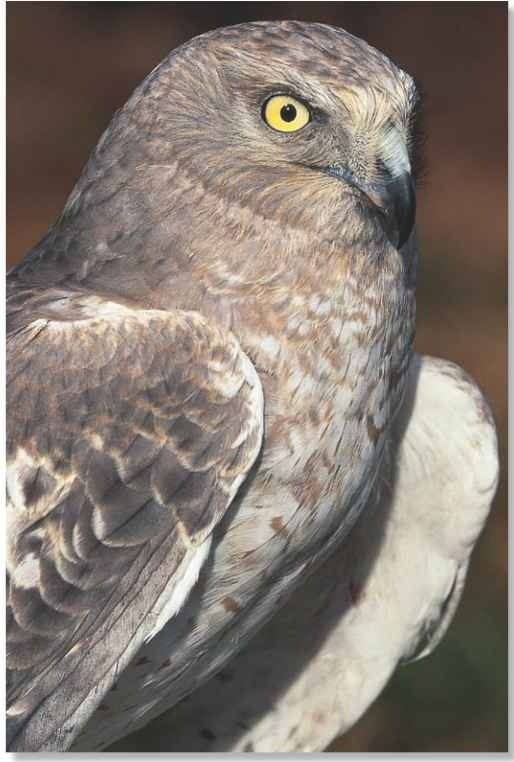ORDER
Falconiformes
FAMILY
Accipitridae
GENUS & SPECIES
KEY FEATURES
• An elegant bird of prey that hunts at a leisurely pace, flying low over open country in search of small birds and mammals
• In courtship aerobatics, the male tumbles in display or drops food to the female in a midair pass
• Once severely persecuted in Britain, communal winter roosts are now widespread again
WHERE IN THE WORLD?
Breeds throughout North America, Europe and Siberia; winters in southern U.S. south to South America; in Europe from southern Asia and southern Europe to northern Africa
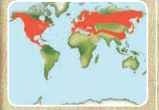
LIFECYCLE
A methodical hunter, the northern harrier turns into a stunt flier as it launches into a spectacular sky dance to impress its mate.
HABITAT
A bird of wide open spaces, the northern harrier is widespread across the U.S. and Canada. It prefers to breed in marsh and wetland edges; it was in this habitat that the bird was given its old name of marsh hawk. In Europe and Asia, where it is called the hen harrier, it breeds in large expanses < heather, gorse (a thorny bush) and boggy hollows, but also in moutains up to 8,000′. During the winter the bird migrates to warmer areas where it prefers fields, pastures and coastal marshes.
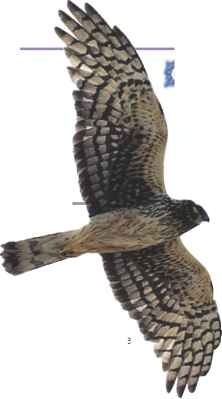
Harrier haunts The northern harrier prefers covered areas.
The northern harrier spends about 40% of daylight hours on the wing and covers about 100 miles every day.
Harrier breeding pairs often dive-bomb people who venture too close to their nests. They may also strike with their talons.
FOOD & HUNTING
Unlike most birds of prey, the northern harrier relies on slowness ratherthan speed when hunting. Its wings and tail are large in relation to its slim body, enabling it to fly at speeds of less than I 2 mph as it scans the ground from a height of 10-1 3′. The bird adjusts its speed according to its target and terrain. It is at its slowest when hunting voles on rough ground, but the harrier reaches speeds of 25 mph when skimming over ploughed fields or short grass in search of birds. The northern harrier also relies on its acute sense of hearing to locate prey. It has a facial disk of feathers which helps to channel the faintest of squeaks into its large ears.
Once it has located a prey item, the northern harrier suddenly pounces feet first on the intended victim. It may kill only once in every 15 attempts.
DINING OUT . IN EUROPE
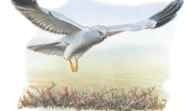
Scouting mission…
A male harrier hunts low over a Scottish moor, scanning the ground and listening carefully for prey.
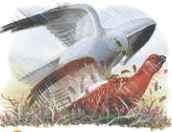
In for the kill…
The northern harrier pounces on the unsuspecting grouse, stabbing the bird lethally with his talons.
BREEDING
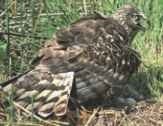
A Incubation station The harrier’s nest is built out of sticks, heather, gorse and grass.
Aerial courtship displays by the northern harrier end in a sky dance, in which the male climbs to a height of 1,600′ before tumbling down. He may plunge and rise more than 20 times before landing. Northern harrier pairs also execute “food passes.” The male bird drops the food, and the female rolls onto her back, catching it in an outstretched foot.
Each female lays between three and six eggs, which she incubates for about a month. Once the chicks hatch, she feeds them on morsels of meat brought to her by the male. The young harriers fledge a month after they are born.
Feed me!
Chicks rely on parents for food for over a month.
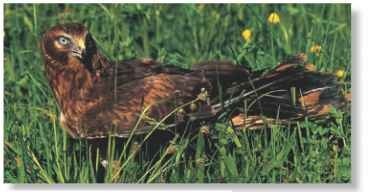
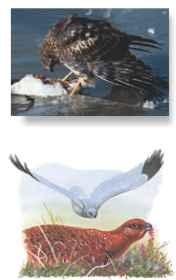
Weakened defense…
He spots a red grouse feeding in the heather below, and swoops swiftly to the attack.
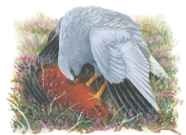
Filling feast
The prey is slowly plucked and eaten at the site where it was captured.
BEHAVIOR
During the winter, northern harriers in Europe and Africa will often gather at traditional communal roosts. The groups average about 30 birds, but more than 200 birds sometimes assemble at these sites.The birds circle the roost together at dusk before settling down for the night.
Roosts are located on the ground in boggy or flooded areas. This offers protection from foxes and other enemies. The bird sleeps on a “bed” of trampled grass or heather
Communal roosting may provide the harrier with a food-finding system. A hungry harrier can recognize a better-fed individual and will follow it to a more productive hunting area the following morning.
Away from its roost, the northern harrier is generally solitary, but it may travel in small groups on autumn migration.
The northern harrier’s vocal range is limited to cackles and wails. It is silent outside the breeding season, except when disturbed at its roost.
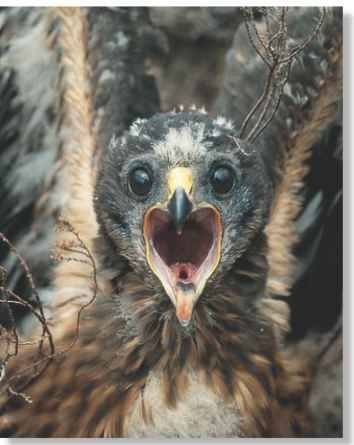
A Shock tactics Young northern harriers screech noisily and flap their wings when startled.
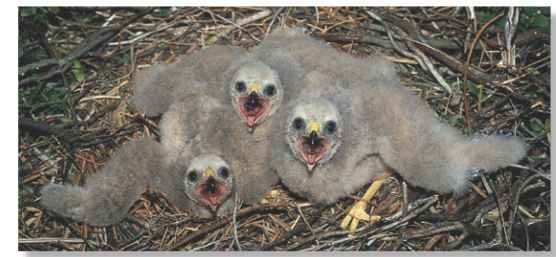
CONSERVATION
Like all birds of prey in the U.S., the northern harrier is protected by law. It is legally protected in Britain as well but, in some European countries, the bird is still shot, especially during its r, migration.This can hurt local populations.
PROFILE
Northern Harrier
The northern harrier’s light build and long wings give it buoyant, energy-efficient flight, enabling it to soar for long periods as it hunts.
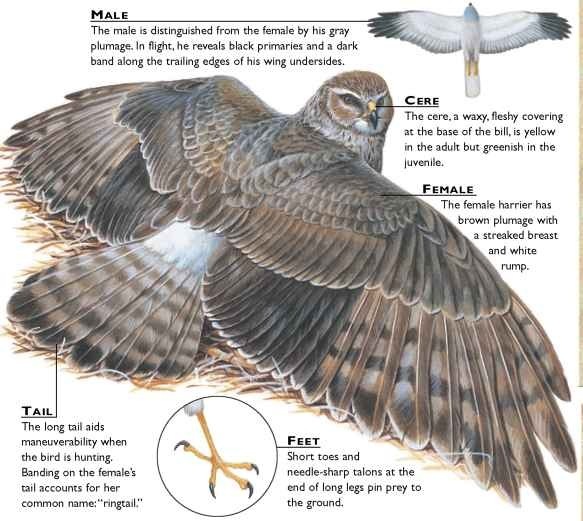
CREATURE COMPARISONS
The marsh harrier (Circus aeruginosus), which is widely distributed in Europe, Africa and Asia, is a relative of the northern harrier The male marsh harrier is mainly dark chestnut-brown with gray wings and tail, while the female is
chocolate-brown with a yellowish-cream head, throat and forewing. Like the northern harrier, the marsh harrier hunts by flying low over the ground, but does so at a greater speed. Its wingbeats are heavier too.

Male northern harrier
Male marsh harrier
| VITAL Weight |
STATISTICS Male 12 oz.; female 18 oz. |
| Length | 17-23″ |
| WlNGSPAN | 38-48″ |
| Sexual : Maturity | 2-3 years |
| Breeding Season | April-June |
| Number of Eggs | 3-6 |
| Incubation Period | 29-31 days |
| Fledging Period | 32-42 days |
| : Breeding Interval | 1 year |
| ‘ Typical Diet | Small birds and rodents |
| Lifespan | Up to 16 years; usually less than 12 years |
RELATED SPECIES
• Harriers, as a group, are found virtually” throughout the world, ..but expert opinion on the number of species -ranges from 9-13. Montagu’s harrier, Circus pygargus (below), of Europe, looks much like the northern harrier.

